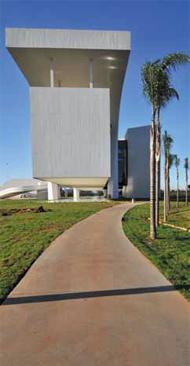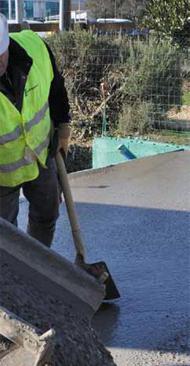Where to use:
- Driveways
- Pathways
- Sprayed shotcrete concrete
- External paving
- Precast elements
- Cold-floors
- Any other concrete application where enhanced properties are required
- Floors ( Industrial , commercial or domestic )
Advantages:
- Reduces the possibility of spalling of concrete edges
- Reduces labour required
- Simplifies the construction process
- Improved concrete properties
- Improved impact and abrasion resistance
- Turns concrete into a composite material that slows crack formation and reduces plastic shrinkage cracking
- Impact and wear-resistance can also be enhanced
- Reduce the overall bleed and consequential settlement cracking
Minimum Standards for Ultra ™ Fibre Concrete:
- Grade of Concrete: Greater than 15Mpa
- Cement Type: Any combination
- Aggregate Size: Available with all standard aggregate sizes
- Consistence: S2 and greater (for lower workability please seek guidance from Lafarge’s technical team)
- Fibres: 3mm, 6mm, 12mm, 19mm
- Drastically reduces the potential for plastic shrinkage cracking to occur by constantly redirecting micro cracks each time a fibre filament is encountered.
- Reduces the permeability of concrete through the reduction in bleed eater, which reduces the development of capillary pores associated with bleed water. This reduction of pores also decreases the absorption properties and sustainability.
- Greater impact resistance: Impact damage is common in concrete, particularly at the surface andedges of elements and saw cuts. Micro fibres reduce the spalling of the concrete by providing secondary reinforcing.
- Improved abrasion resistance. As micro fibres control bleed water migration, the possibilityof the fine cement and sand particles segregating from the mix is drastically reduced. This promotesan efficient hydration of cement which improves the bonding of the cement matrix and achievesa tougher more durable concrete surface
- Improved freeze thaw resistance. The ability of the concrete to take up water is reduced as a consequence of the lower permeability and absorptivily associated with reduced bleeding. Any water that is taken up and freezes will generate tensile force as it expands. These expansionforces are resisted by the micro fibres in the concrete.





